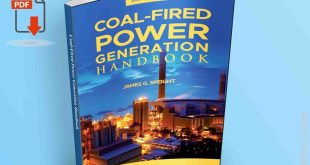Demonstration of Advanced Boiler Instrumentation Technologies Technical Report by EPRI includes New and increasing limits on emissions (in particular, NOx) and the new emphasis on heat rate have underscored the need to measure flue gas constituents more accurately and in more locations. Utilities are making large capital investments in boiler improvements and emission control devices. These investments can be enhanced through the use of innovative, on-line instrumentation closer to the furnace combustion zone. Traditionally, sensors for flue gas constituents, such as NOx and CO, are implemented as part of a continuous emissions monitoring system (CEMS), some of which might be installed far downstream of the combustion process. This creates a significant time delay in the measurements and hinders accurate feedback based on individual unit performance.
Better measurement of the combustion conditions is increasingly important. Emission control devices perform more consistently if supplied with more controlled inlet conditions. Fuel costs are increasing, and improved efficiencies can be effected through the improved measurements these instruments provide. The TDL technologies hold great promise in a variety of measurements previously unavailable, including gas constituents at the plane of furnace exit.
This may provide new opportunities for improving temperature and, therefore, energy distribution in the boiler, as well as minimizing NOx production and heat rate.
The Contents of Advanced Boiler Instrumentation Technologies
- INTRODUCTION
- CO/OXYGEN SENSORS
- Energy performance assessment of Boilers
- Boiler Instrumentation
- NOx production
- TUNABLE DIODE LASER
- Boiler Controls & Instrumentation
- FURNACE EXIT GAS TEMPERATURE
- Boiler combustion process
- STACK FLOW MEASUREMENT
- MOISTURE
 Boilersinfo Boiler and Mechanical Power Digital Library
Boilersinfo Boiler and Mechanical Power Digital Library






